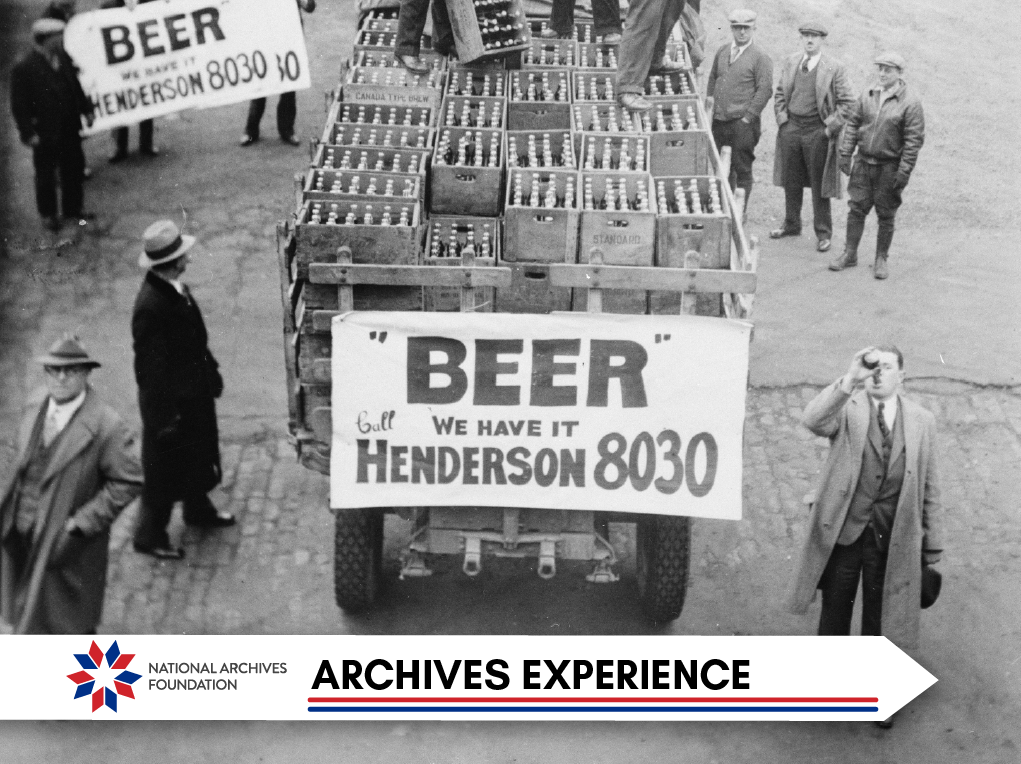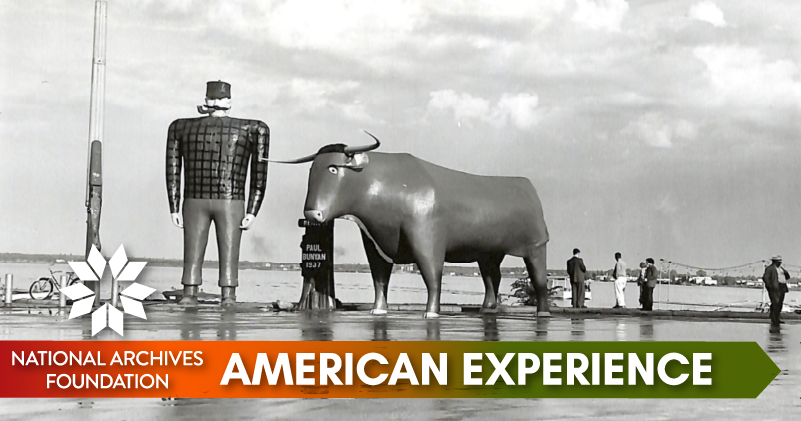Cheers to the New Year!

Since it’s already the second week of January, you may be back in the swing of things at school or the office. But we couldn’t pass up this opportunity to ring in the New Year with the holdings of the National Archives, and we think this week’s records will be a cold, refreshing change of pace. Raise a glass—we’re welcoming the new year with a history of beer and brewing…
History Snack
When the Pilgrims landed in Plymouth in 1620, one of their most serious concerns was the dwindling supply of beer on their ship, the Mayflower. Following the ancient brewing traditions of home brewing in Europe, the making of beer was primarily women’s work and was conducted by families. The early homes of Plymouth often contained a space for the brewing of beer. Their product, however, left much to be desired because their early efforts at growing barley were largely unsuccessful.
By the 1770s, no significant New England town was without a brewery and tavern, and towns of any size had more than one. The recipes for and characteristics of these early beers varied widely depending on the available ingredients and the expertise of the brewers.
As the nation grew and settlement moved west, brewers moved with them. Emerging cities like Milwaukee, Minneapolis, and St. Louis became home to substantial German populations, with German-trained brewers among them. As mining boom towns sprung up in California and along the Rocky Mountains, breweries and saloons were among the first buildings erected. They were often crude log structures or even tents, but they did brew beer, and a good brewery could draw customers from nearby and far away.
Just prior to the outbreak of the Civil War, Eberhard Anheuser took control of a failing Bavarian-style brewery in St. Louis. Anheuser, previously a successful local soap maker, took over the small brewery, which was producing several types of German beer. Anheuser became acquainted with a local brewery supply salesman named Adolphus Busch, introducing him to his daughter Lilly. The two hit it off and were married in a double ceremony in 1861 with Busch’s brother Ulrich and Lilly’s sister Anna. Adolphus quickly joined the Anheuser business and immediately set about innovating the brewing of beer at the company.
In 1871, Busch was among the first brewers to adopt Louis Pasteur’s process of pasteurizing beer, which kills the microorganisms that are a natural part of the brewing process that causes spoilage in the finished product. Pasteurization greatly lengthens the shelf life of beer, making transportation (and wider distribution) a possibility for the first time. Despite this, beer still had to be kept cold for extended travel. To mitigate this problem, Busch gladly embraced a new innovation, refrigerated railroad cars, specifically for the transportation of his beer.
In 1873, the process of refrigeration changed forever when a German inventor developed a mechanical means of chilling air and, not coincidentally, liquid. Mechanical refrigeration was, in fact, invented specifically for the brewing industry, and although it was expensive, it was quickly adopted by forward thinking brewers across Europe and North America. Anheuser was one of the first American breweries to install a refrigeration plant. Soon, beer could be shipped from coast to coast and eventually anywhere in the world that could provide refrigerated transport.

Device for distilling beer and spirits
In 1876, Busch and his friend Carl Conrad introduced a new kind of beer to the American public using a recipe derived from one they found in Czech Bohemia, the home of the first lager beer. They named their product “Budweiser” after the Czech brewing town of Budweis. It was an immediate hit in the United States.
The prohibition movement first gained a significant foothold in America in the 1820s and gradually gathered strength across the country in the closing years of the 19th century. By the 1890s, beer companies were trying to counter it by advertising beer as a healthy drink compared to liquor. When people took the prohibition pledge, they could promise to abstain from liquor or from beer or from both.

Beer cases on loading truck
When the 19th amendment was being debated, anti-prohibition forces and brewery owners in particular urged that beer not be included in the legislation, and up until it passed, brewers were confident that they could keep beer from being excluded. They were shocked and horrified when it turned out that they could not.
Prohibition spelled the end of the line for almost all small breweries and for most barley growers and maltsters. Big breweries with deep pockets managed to sell other products like nonalcoholic beer and cereal-based drinks to utilize their otherwise mothballed production plants.

Poster promoting temperance movement
As beer-promoting protesters predicted, prohibition also damaged the economies of towns and cities that had been home to big brewers like New York, St. Louis, and Milwaukee, as well as towns across the barley producing states in the American West and Midwest. The downfall of the brewing industry (as well as the surge in crime associated with bootlegging) was acutely felt as the Great Depression set in. Calls for the abolition of prohibition swelled as the national economy crashed.
When FDR was running for office, one plank on his platform was the repeal of prohibition. With repeal, the big brewers who had weathered the 13-year storm bounced back into production. Small brewers, on the other hand, mostly did not. Unable to compete with the industrial juggernaut of the big breweries’ advertising, production networks, and overall scale of operations, small regional breweries mostly died out by the mid-1960s.

FDR’s cocktail shaker
The craft beer revolution of the late 20th century, however, turned the tables on the American mega-breweries. In 1978, President Jimmy Carter signed a bill into law that lifted the regulation against home and small business brewing. Small breweries were then allowed to bottle and distribute their own beer. By the 1990s craft beer was a fully accepted part of the American brewing scene. Currently, nearly 10,000 small breweries serve their local communities—just as brewers had for generations at the nation’s beginnings.

View this profile on InstagramNational Archives Foundation (@archivesfdn) • Instagram photos and videos





